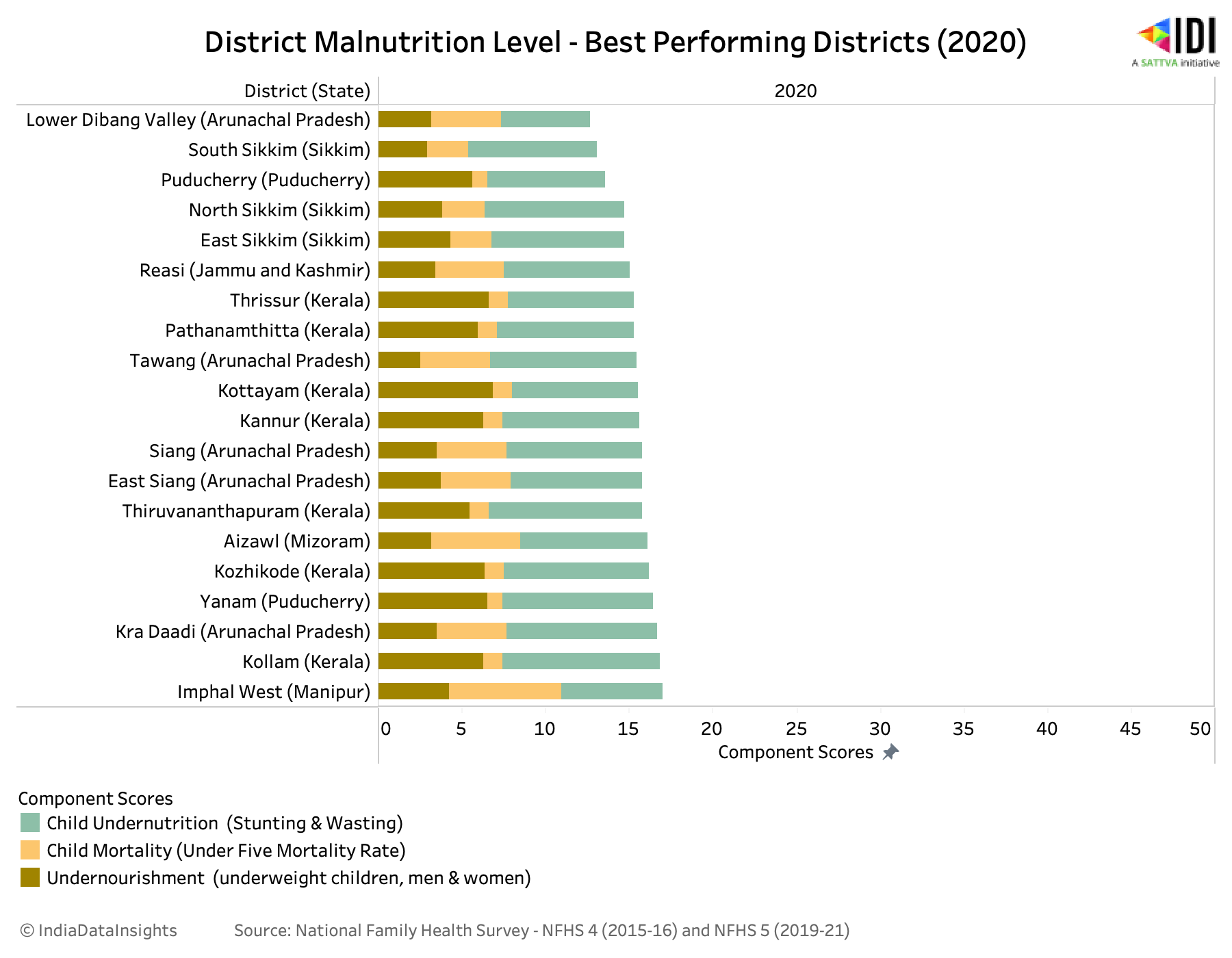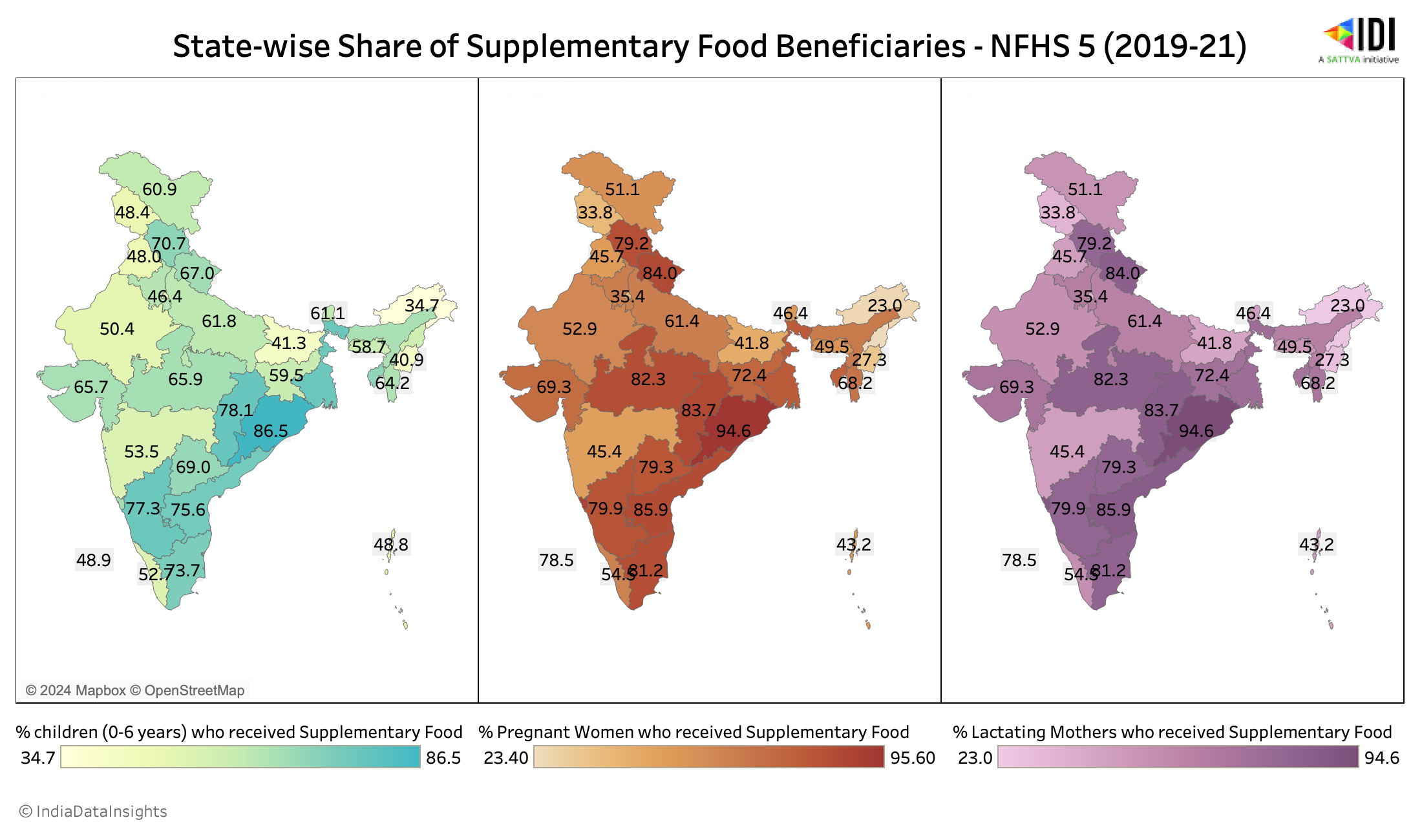The State of Nutrition: India’s Endeavours to Elevate Nutrition
The State of Nutrition: India’s Endeavours to Elevate Nutrition
Published on :- September 6th, 2024
In this edition of Data Dialogue explores, we commemorate National Nutrition Week (September 1 to 7), by exploring the state of nutrition in India and the efforts made to improve early childhood care and nutrition support for pregnant and lactating mothers via the Integrated Child Development Services (ICDS).
The India Data Insights team at Sattva has computed the ‘Malnutrition Index’—an index to measure the level of malnutrition in the districts and states of India, to understand the state of nutrition. This index draws upon the methodology from other similar indices with appropriate modifications for the Indian context and data availability to facilitate decision-making.
The 'Malnutrition score' is derived from six parameters distributed across three dimensions.

Note: The Malnutrition Index is calculated using indicators from the National Family Health Survey (NFHS 4 & 5). As the NFHS is a sample-based survey, the resulting malnutrition levels/scores offer an indicative overview of areas that may have nutritional deficiencies among children or adults (both men and women).

According to the most recent data, we see that among the top performers, Kerala has retained a moderate level of malnutrition while the states in the north-eastern region have significantly improved in nutrition levels since 2016. In 2020, four north-eastern states (Sikkim, Arunachal Pradesh, Manipur and Mizoram) have improved from serious to moderate levels of malnutrition.
In 2016, ~12% (74 of 628) districts were in extreme malnutrition levels, and by 2020, most of these districts have transitioned from extreme to alarming levels with only 2 districts having remained unchanged. During the same period, the number of districts with moderate levels of malnutrition has doubled.

Malnutrition Index 2020, shows that the top districts have low component scores across all three dimensions (Undernutrition, Mortality, and Undernourishment). The majority of these districts are in the states of Kerala, Sikkim, Arunachal Pradesh, Manipur, Jammu & Kashmir, and Puducherry.
One of the key challenges India has been battling for years has been to close the nutrition gap and thereby improve the overall health and well-being of people. The Integrated Child Development Services (ICDS), is one of the programmes from the Government of India which aims to improve the nutritional and health status of children aged 0-6 years, as well as pregnant and lactating mothers. The programme offers nutritional supplements and preschool education to children.

As per the latest NFHS 5 survey (2019-21), more than one-third (~67.5%) of children in the age group of 0-6 years availed ICDS services. 62.1% received food supplements, 53.2% received immunisations, and 56.5% received health check-ups.
More than two-thirds of the eligible population (children, pregnant women and lactating mothers) availed supplementary food service in Rural areas. In urban regions, the percentage was just around 50%.

Over 70% of the eligible population in the southern and central regions, and a few states in eastern regions, such as Odisha and Jharkhand, have received supplementary food services from ICDS.
As per the latest National Family Health Survey (NFHS 5), half of all pregnant women and 2/3rd of young children in India are anemic, making them vulnerable to multiple malnutrition and health issues.
The Supplementary Nutrition Program (SNP) under ICDS plays a vital role in curbing the increase in these numbers. As of November 2023, there are more than 10 Crore beneficiaries of the Supplementary Nutrition Programme (SNP). Of these beneficiaries, ~88% are children between the ages 0-6 years, and 12% are pregnant & lactating women.

The total number of SNP beneficiaries has increased by more than 150% in the last two decades. During the same period, the child beneficiaries have more than doubled.
Poor nutrition and health, particularly among women and young children, have troubled India for decades. While supplementary nutrition and poshan services under ICDS have been critical initiatives to improve children's nutrition and overall development from an early age, the question of what other initiatives could help elevate India’s nutrition levels persists.
For more nutrition-related data assets on IDI, click here.
